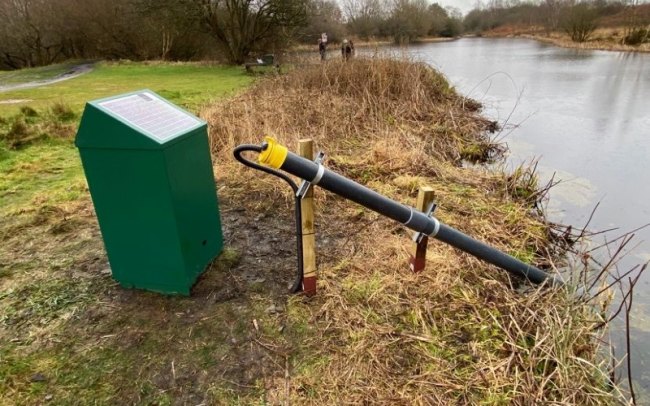Views
What does the water sector need from the town planning system?

This article first appeared in The Planner on 23 December 2024.
Weighing in at nearly 60 pages and over 100 questions, the National Planning Policy Framework (NPPF) consultation signalled the Government’s serious intent to get the country building. The implications of building more housing and commercial developments are significant for the water sector. However, national policy largely ignores the fact that new build homes require new water supply. As a result, these implications are unfortunately often picked up too late in the planning process.
It sounds obvious when you say it out loud. Homes need a supply of water on tap for all the things we take for granted – drinking, cooking, washing, cleaning and of course, wastewater management and removal. Businesses and industry need these essential amenities too. Water is therefore a fundamental enabler of economic growth.
And the environmental implications of more housing and businesses, and associated water supply and wastewater, can be significant, especially in the driest parts of the country. From rainwater capture and re-use, to sustainable drainage systems and nature-based solutions, water companies can work with planning authorities and developers to minimise environmental harm and optimise sustainability.
Further reforms needed
Despite some useful discussion of a few water-related issues in the NPPF consultation, the Government’s response was fairly equivocal and seems to underplay the risk an unreformed planning system poses to improving our water security and the quality of our waterways. With more planning reform coming down the track, including a planning and infrastructure bill, the Ministry of Housing, Communities and Local Government (MHCLG) needs to be thinking seriously about as a starting point:
- Sustainable new housing: Embed the principles of sustainable water management in new builds, e.g. water efficient housing and sustainable drainage systems.
- Broaden permitted development rights: Extend the list of infrastructure and equipment allowed under permitted development to include new technology such as water quality monitors.
Planning as first piece of the sustainability puzzle
New developments can have significant effects on the water environment, both by increasing demand for water and increasing volumes of wastewater and surface run-off.
Water efficient homes will support environmental protection and biodiversity by reducing the amount of water we need to take from the environment. Sustainable drainage radically reduces the amount of rainwater in our sewers, addressing a major cause of surface flooding and, in some places, storm overflow discharges.
In this vein, we think that the planning system should ensure the principles of sustainable water management are reflected in all new housing and infrastructure. Mandatory sustainable drainage systems backed by national standards, as envisaged in Schedule 3 of the Flood & Water Management Act, and firm but achievable efficiency standards on new build properties, via amendments to the building regulations would be a big step in the right direction and have been on the agenda for some time now.
More ambitiously, harvesting rainwater to flush loos or wash cars can massively reduce household demand for water from the public network, though these ‘dual pipe’ solutions hardly exist in the UK at present. The planning system says far too little about these and other opportunities that the built environment presents in driving improvements to water security and quality. The Government has also been slow to signal its commitment to addressing this oversight.
These sorts of policy requirements will dovetail well with the water sector’s aim to reduce abstraction pressures and prevent sewage entering our rivers and seas. Regrettably, the Government’s NPPF reforms stop short of any new significant policies to support sustainable water management but do hint at more consultation on sustainable drainage in particular. Some may perceive upfront requirements to plan around water issues as a barrier to growth. We think this is a short-sighted view and only kicks problems down the road when they are better addressed upfront.
With so much development stalled behind ‘neutrality’ advice and commercial applications for water supplies being delayed in greater numbers, the case to eliminate unsustainable water management through the planning system has never been stronger.
Quick wins for the environment
The water sector has just been given the green light to invest £104 billion over the next five years to keep the taps flowing and toilets flushing, as well as delivering the biggest-ever investment into protecting our natural environment. This will involve an abundance of new infrastructure big and small, much of which will need planning permission.
The scale of the challenge is gargantuan. In addition to supplying homes and business, the water sector is also focussing on cleaning up our rivers and seas. A key part of this are plans to install up to 9,000 river quality monitors, which will provide unparalleled insights into the health of our waterways while helping deliver on statutory requirements of the Environment Act 2021.
The location of the monitors is wholly determined by regulatory requirements, and their footprint is modest. Under current rules, each one will likely require an individual permission– why? This represents a huge but unnecessary burden on planning authorities and represents a significant risk to timely delivery. Other examples like this abound. A simple update of permitted development rights would represent a quick fix for planners and simultaneously a big win for our waterways.
It is now with the Government to determine the path for its growth ambitions, as realised through planning reform. Water infrastructure and sustainable water management can support the Government’s ambitions by enabling them to be achieved sustainably. A bold NPPF should reduce barriers to essential water infrastructure, while limiting upfront the impacts that other development can have on water quality and security.




